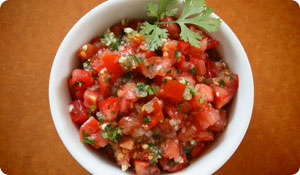
Spreading a little horseradish-flavored mustard on your sandwich will give it some extra zip-and a whole lot more! Here's why some condiments are better for you than others.
Condiments help simple, everyday foods rise above the ordinary to become extraordinary. And as it turns out, some great-tasting condiments also do great things for your health. Some condiments are high in sodium, but since they are normally used in small amounts, it is rarely a concern.
- Horseradish is a low-calorie root vegetable that contains cancer-fighting antioxidants similar to those found in broccoli and other cruciferous vegetables. The root is usually grated and made into a sauce or relish that is served with meats and shellfish. It's sharp flavor and intense heat adds a spicy bite to gravies, salad dressings, applesauce, vegetable juices, deviled egg mixtures, vegetable dips and bread spreads.
- Prepared mustard is made from ground mustard seeds, which have some of the highest antioxidant levels, by weight, of any food. Spread on seafood, lean ham and sausages and mix into sauces and vinaigrette dressings for salads and vegetables such as asparagus and green beans.
- Salsa made with a base of fresh tomatoes, peppers and onions is rich source of antioxidant vitamins such as beta carotene and vitamin C. With no added fat, it is a flavorful, low-calorie topping for meats and vegetables and filling for meat or cheese sandwiches.
- Wasabi is a root vegetable native to Japan and grown in the American Pacific Northwest that belongs to the same cruciferous family as horseradish, cabbages and the mustard plant. Like horseradish, wasabi has a hot, pungent flavor that complements sushi, Japanese noodle soups and grilled or roasted meats and vegetables. Grated or mashed wasabi can also be mixed into soy sauce, marinades, salad dressing or dips.
- Cranberry sauce in place of mayonnaise adds moisture and flavor to turkey, chicken and roast pork sandwiches, without adding any fat. Needless to say, it serves the same purpose for roast meats and poultry, too, and that's true not only on Thanksgiving day, but all year round. An added bonus: According to North Carolina University Extension Services, fresh, dried and canned cranberries have the same urinary tract infection-fighting power as cranberry juice.
- Chutney is a spicy, tangy, fat-free condiment that adds exotic, fruity flavor to meat, poultry and fish dishes. Try mango chutney in place of applesauce as a condiment with roast pork tenderloin, or mix it with a little mustard to serve with roast ham or on a lean ham sandwich. Chutney also goes well with goat cheese and Gouda, and can be mixed into chicken, egg or tuna salad.
- Yogurt may not be your idea of a condiment but it made it to this list because it can be mixed with creamy condiments such as mayonnaise and sour cream to cut the fat and still maintain much of the rich flavor of the original. Try a half-and-half mixture of sour cream and fat-free or low-fat yogurt on baked potatoes, in dips or with Mexican dishes that call for sour cream. Use a half-and-half mixture of mayonnaise and yogurt in hearty salads and as a sandwich spread.
Sources:
Kushad, M. "A Little Dab of Horseradish Could Help Resist Cancer." University of Illinois. 9 Mar 2005. Web. 20 Aug 2010.
http://www.aces.uiuc.edu/news/stories/news3066.html
Reece, S. "Urinary Tract Infections and Cranberry Juice." North Carolina University Cooperative Extension. 25 Oct 2005. Web. 20 Aug 2010
http://pitt.ces.ncsu.edu/index.php?page=news&ci=HEAL+1
Halvorsen, B, et al. "Content of Redox-active Compounds (ie, Antioxidants) in foods consumed in the United States." American Journal of Clinical Nutrition. 2006; 84: 95-135. Web. 20 Aug 2010.
http://voh.chem.ucla.edu/vohtar/fall06/classes/153C/pdf/Best%20antioxidant%20foods.pdf





